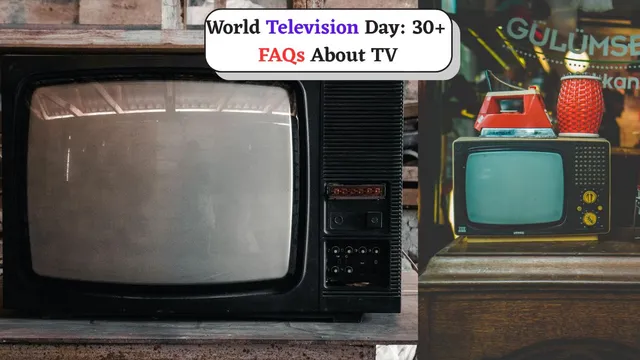- By Aditi Priya Singh
- Fri, 21 Nov 2025 09:00 AM (IST)
- Source:JND
30+ FAQs About Television: Every year on November 21st, World Television Day is observed to highlight the extent to which television influences our lives. Even though we have phones, tablets, and an endless amount of internet content these days, television is still the best medium for informational sharing, entertainment and education. TV connects viewers to current events quickly, whether they are urgent updates, significant global events, games, animated series, or educational programs.
The United Nations declared this day in 1996 to recognise how television helps promote peace, development, and public discussions. Over the years, TV has evolved from large black-and-white screens to advanced smart TVs that offer internet-based content. As we celebrate World Television Day 2025, it becomes a good opportunity to revisit the history of television, understand its origin, explore how it works, and learn how it continues to change with technology.
Below are 32 simple FAQs that explain everything from the invention of television to its role in modern life.
History and Origin of Television
1. What is World Television Day?
It is a UN-declared observance on 21 November to highlight the role of television in global communication and awareness.
2. Who invented the first television?
John Logie Baird, a Scottish engineer, created the first working television system in 1926.
3. When was the first TV demonstrated?
The first public demonstration took place in 1926 in London.
4. When did colour television start?
Colour TV broadcasting began in the 1950s in the United States.
5. When did India get television?
Television was introduced in India in 1959 through Doordarshan.
6. When did colour TV come to India?
Colour broadcasting arrived in 1982 during the Asian Games.
ALSO READ: 30+ FAQs About Skin Disease Psoriasis On World Psoriasis Day 2025- Symptoms, Treatment And More
Television Technology and Evolution
7. What was the first type of TV?
Early televisions were mechanical models before electronic TVs took over.
8. What is a smart TV?
A smart TV can connect to the internet and stream online content.
9. What is the difference between LED and LCD TVs?
LED TVs are a type of LCD TV but use LED backlighting, giving brighter picture quality.
10. What is an OLED TV?
OLED TVs use organic light-emitting diodes that create deeper blacks and vibrant colours.
11. What does 4K TV mean?
A 4K TV offers four times the resolution of Full HD, providing sharper details.
12. What is HDR?
HDR (High Dynamic Range) improves colour accuracy, contrast, and brightness in TV visuals.
13. What is a set-top box?
A set-top box receives signals from cable or satellite and displays content on your TV.
Broadcasting and Channels
14. What was India’s first TV channel?
Doordarshan, launched in 1959, is India’s oldest television channel.
15. What is satellite TV?
Satellite TV sends broadcast signals from satellites to dish antennas at viewers’ homes.
16. What is digital TV?
Digital TV offers clearer sound and picture compared to older analogue technology.
17. What are OTT platforms?
OTT platforms like Netflix, Hotstar, and Prime Video stream content over the internet.
18. What is DTH?
DTH (Direct-to-Home) is a satellite-based service that sends TV signals directly to your dish at home.
Television’s Impact on Society
19. Why is television important?
Television informs, entertains, educates and connects people to world events.
20. How has television changed education?
Educational channels and learning programmes help students understand topics visually.
21. How does TV influence culture?
TV shows shape trends, fashion, language, and lifestyle habits.
22. Can television spread awareness?
Yes, TV raises awareness about health, the environment, elections, and social issues.
23. Does television affect children?
Yes. It can help children learn, but excessive screen time may cause negative effects.
ALSO READ: 40+ FAQs About Iodine- Uses, Benefits, Sources And More| World Iodine Deficiency Day 2025
Fun and Interesting FAQs
24. What was the first TV advertisement?
The first TV ad aired in 1941 for Bulova Watches in the US.
25. What is binge-watching?
Binge-watching means watching multiple episodes of a show back-to-back.
26. What is a remote control?
It is a handheld device used to operate the TV without touching it.
27. Why were old TVs large?
Older TVs used CRT technology, which required big and heavy screens.
28. What are TV ratings?
TV ratings show how many people watched a programme.
Modern-Day Television FAQs
29. Why are smart TVs popular?
Because they combine traditional TV viewing with online streaming and apps.
30. Can a TV connect to Wi-Fi?
Yes, almost all smart TVs today support Wi-Fi connectivity.
31. Are CRT TVs still used?
Some rural homes still use them, but most people have shifted to LED TVs.
32. What is the future of television?
TVs will become more advanced with AI, smarter features, and better picture quality.





